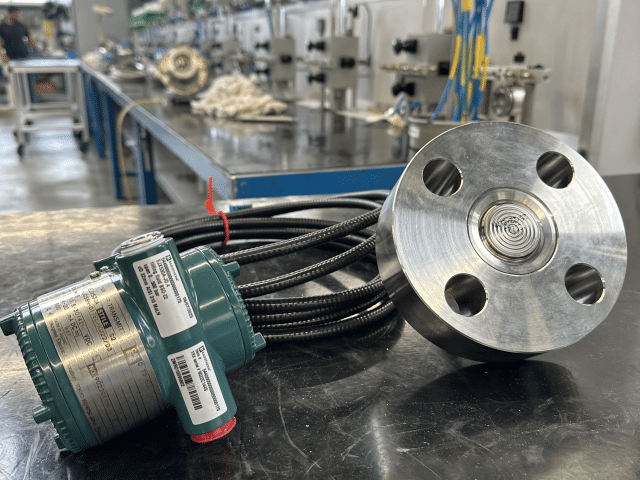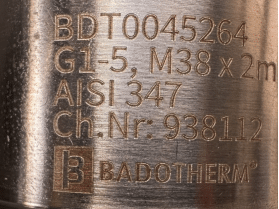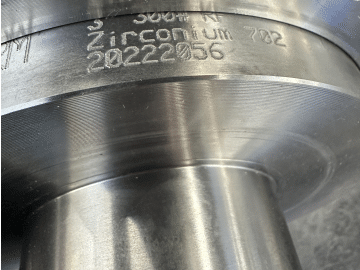The low volume cover flanges are mounted back again to ensure the pressure rating. This construction eliminates the use of a gasket between the low volume cover flange and the pressure transmitter itself, so it becomes a fully welded system without any gasketed connections.
As you may know, connections with gaskets are prone to (small) leakages over time, especially when deep vacuum condition occurs. Such full welded construction eliminates the possibility of any leakage, in this case the risk of air being drawn into the diaphragm seal capillary system is very low. Air inclusion in a diaphragm seal system results in a drift or complete pressure measurement system failure. The deeper the vacuum, the higher the risk of this phenomenon of air inclusion to occur. For this reason, Badotherm recommends full welded systems for all applications with (vacuum) pressure < 400 mbara, for continuous vacuum operation.
Even though the full welded construction is designed specifically for deep vacuum applications, it also offers additional benefits. It also ensures that the system remains functional and no leakage occurs when unintentionally the bolts would be loosened or unbolted the low volume flanges. Normally this would directly result in loss of fill fluid and thus loss of the pressure measurement. Additionally, the Badotherm full welded construction is ‘repairable’, meaning it allows for instruments to be refurbished with new diaphragm seals and capillaries, whilst re-using the pressure transmitter.
Two other points to consider with diaphragm seal systems when you encounter a vacuum condition in your process:
- Pay attention to the selection of the filling fluid – The combination of vacuum and possible elevated process temperature, might exceed the vapor pressure curve of standard filling fluids. This will result in a complete system failure, since gas forming will take place behind the diaphragm and continuous pressure built up will give a continuous misreading.
- Pay attention to the mounting position of your pressure transmitter – Pressure transmitters often can withstand a minim vacuum of 27 to 35 mbara. When mounting a pressure transmitter at least 50 cm below the lowest nozzle, the liquid column created by the height of the diaphragm seal capillary will protect the transmitter. This liquid column represents approximately a 50 mbar positive pressure on the pressure transmitter sensor and thus protects in case of full vacuum (1 mbara). see below picture for a typical mounting style in case of vacuum.

There is a lot to consider with diaphragm seal system selection. Our diaphragm seal engineering and selection tool, Basecal, takes all these process and ambient conditions into account. To ensure a suitable measurement with correct selection of fill fluid, correct diaphragm size and correct placement of the transmitter. Next to providing information about response time and TPE, taking into account worst case conditions. You can register for a free trail on www.basecal.com.
As for for the picture used on top of this article, this is taken from an instrument during assembly of the diaphragm seal system in production. We see here a full welded construction for the Rosemount coplanar system, which just has been subjected to liquid penetrant testing. Each transmitter manufacturer has different mechanical requirements for the full welded construction due to the different sensor bodies. As you can imagine, welding to the transmitter body is a very sensitive and an accurate activity. Which needs to be done with care and experience according strict procedures and settings. Badotherm is able to make full welded constructions on most pressure transmitter manufacturers and has been approved to do so. See below picture with several constructions for different pressure transmitter brands

Should you have any further questions regarding this topic, please do not hesitate to contact us.



